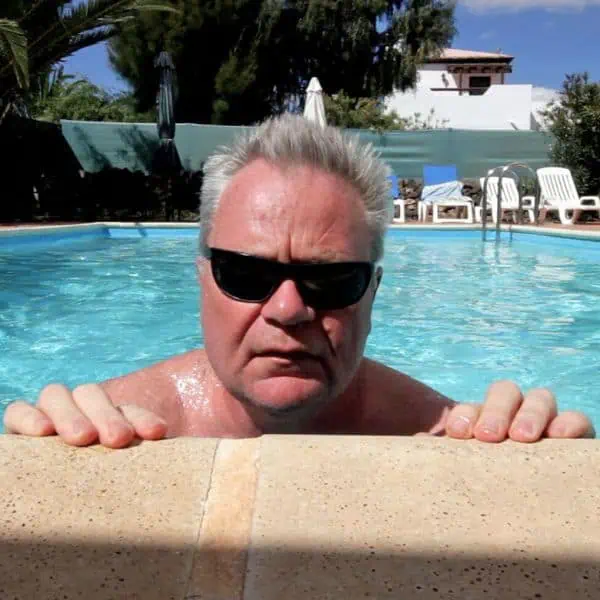It can be very frustrating if your hot tub keeps tripping the breaker. Understanding the reasons behind this issue can help you troubleshoot and resolve the problem.
A tripped breaker can signal a serious electrical problem, so addressing the issue as soon as possible is important.
In this post, we explore some of the most common reasons why a hot tub might keep tripping the breaker, including issues with the hot tub’s electrical components, improper wiring, and moisture exposure.
We also provide some tips on troubleshooting and fixing the problem so you can get back to enjoying your hot tub in no time.

Key Takeaways
- Damaged wiring or faulty electrical components can cause breaker tripping
- Moisture and water exposure may lead to GFCI breaker issues
- Power surges and lightning strikes can also contribute to the problem
Troubleshooting A Breaker Tripping Problem – How I Did It
My hot tub began tripping the breaker last year, the first real problem I have had with it in the ten years or more I have owned it.
I looked at the wiring and everything looked fine. I could see no water inside the housing, and as the breaker was quite new, I assumed it was not faulty. So, I turned my attention to the electrical components as a possible cause of the problem.
I located where the various components plugged into the power bus and, using a process of elimination, unplugged each one and turned the power back on at the breaker.
I unplugged the pump, but the breaker tripped immediately. So I plugged it back in and unplugged the heater. Again, the breaker tripped as soon as the power was on.
So the heater was plugged back in, and the Ozonator was unplugged. This time, the breaker didn’t trip, the pump started, and the heater began to operate. So, the Ozonator was the problem.
Fortunately, in this case, I could continue using the hot tub until I could obtain a replacement, which I would not have been able to do if the pump or the heater had been at fault.
Reason 1: Damaged Wiring
Wiring Short
Damaged wiring in your hot tub can cause a short circuit, leading to the breaker tripping. A wiring short occurs when two or more wires that should not be touching each other come into contact, creating an unintended path for electricity to flow. This situation can result from various factors, such as wear and tear, corrosion, or incorrect installation.
To identify and resolve a wiring short, inspect your hot tub’s wiring for any signs of visible damage, frayed insulation, or exposed wire strands.
If you discover any damaged wiring, it is crucial to address the issue immediately, as it can lead to more severe problems and even pose a safety risk.
The best action is to engage a professional technician to repair or replace the damaged wires.
Burnt Wires
Another common reason for a hot tub tripping its breaker is burnt wires. Overheating can cause the insulation around a wire to break down and melt, leading to a burnt appearance and a loss of integrity in the wiring.
Burnt wires may produce a strong, unpleasant odor and can be identified visually by their charred or discolored appearance.
When burnt wires are detected in your hot tub’s electrical system, they must be replaced promptly. Otherwise, they can result in short circuits, additional damage to your hot tub’s components, and even a fire hazard.
As with wiring shorts, it is highly recommended that a qualified technician perform the necessary repairs or replacements to ensure safe, optimal hot tub operation.
Reason 2: Electrical Component Issues
Faulty Heater
A faulty heater can also cause the breaker to trip. If the heating element in your hot tub has a short circuit, it will draw excessive power, causing the breaker to trip.
To check if your heater is the issue, disconnect it and see if the electricity still trips. If it does not, then the heater is faulty. Consider consulting a professional to inspect and replace the heater if necessary.
Faulty Pump
The hot tub’s pump is another electrical component that might lead to tripping if it malfunctions.
Typical issues include motor failure, damaged bearings, or a clogged impeller, which can cause the pump to work harder and draw more power than it’s supposed to.
Listen for unusual noises or check if it’s overheating to identify a faulty pump. If you suspect a problem, consult a professional to inspect and, if necessary, replace the pump.
Faulty Ozonator
The Ozonator is another electrical component in your hot tub that can cause the breaker to trip when malfunctioning.
A faulty Ozonator might have damaged wiring or an internal short circuit, leading to excessive power draw and breaker tripping.
Disconnect it to check for a faulty Ozonator and see if the electricity still trips. If it does not, then the Ozonator is the problem, so inspect the unit for any signs of damage, including frayed wiring.
If issues are found, it is probably easiest to replace the unit – or leave it unconnected and accept that you may need to add a little extra sanitizer.
Corroded connections
Over time, your hot tub’s electrical connections may suffer from corrosion, which can cause the breaker to trip. Corrosion can occur due to moisture, chemicals, and general wear and tear exposure.
To address this issue, inspect your hot tub’s electrical connections for any visible signs of corrosion. If present, you should clean or replace the corroded parts to prevent further tripping.
Reason 3: Moisture and Water Exposure
Rain Exposure
Moisture and water exposure in your hot tub’s electrical system can lead to frequent breaker trips.
One common source is rain exposure. If your hot tub is outdoors and not adequately covered, rainwater can seep into the control panel or the electrical box, causing short circuits.
To prevent this issue, ensure your hot tub is covered correctly, especially during rainy weather. Keeping the area around your hot tub clean and dry also helps reduce the risk of rain-related issues.
Condensation
Condensation is another source of moisture in your hot tub’s electrical system. It can occur when the warm, humid air inside the hot tub encounters cooler surfaces, such as electrical components.
Condensation may cause water droplets to form on crucial parts of your hot tub, causing the breaker to trip.
To deal with condensation, consider installing a high-quality cover that effectively seals your hot tub. Regularly inspect the electrical components for signs of moisture and dry them up as needed.
Maintaining proper water temperature and chemical balance can also help reduce humidity in your hot tub.
Reason 4: Faulty or Old GFCI Breaker
Failed GFCI Breaker
A failed GFCI breaker could be why your hot tub keeps tripping the breaker. Ground Fault Circuit Interrupters (GFCIs) are designed to protect individuals from electrical shock by sensing and interrupting electrical problems, such as leakage current.
When a GFCI breaker fails, it may no longer provide the necessary protection, causing your hot tub to trip the breaker repeatedly.
To troubleshoot a failed GFCI breaker, ensure it properly functions by checking if it resets correctly. If your breaker fails to reset or trips immediately after resetting, it might be a sign of a failed GFCI breaker, and you should consider replacing it to prevent electrical hazards.
Aged GFCI Breaker
An old GFCI breaker is another potential cause of your hot tub tripping the breaker. Over time, GFCI breakers can wear out due to factors like age, power surges, or even nearby lightning strikes. This can result in the breaker failing to protect your hot tub circuit as intended, leading to frequent trips.
If your GFCI breaker is old and frequently trips, you might consider replacing it with a new one. This can help prevent electrical problems and ensure your hot tub remains safe and operational.
If unsure, consult a qualified electrician when dealing with electrical components. Attempting to replace a GFCI breaker alone can be dangerous if not done correctly.
Reason 5: Power Surges and Lightning Strikes
Unexpected Power Surge
Power surges are sudden increases in voltage that can cause electrical components to malfunction or fail. Your hot tub’s electrical system is sensitive to these fluctuations in power, and unexpected power surges may cause the breaker to trip.
Ensure your hot tub is connected to a dedicated electrical circuit to minimize the effects of power surges.
Additionally, using a good-quality surge protector can help to safeguard your hot tub’s electrical components against the damaging effects of power surges.
Damage from Lightning
Lightning strikes can cause severe damage to your hot tub’s electrical components, leading to the breaker tripping.
When lightning strikes nearby, it can create a surge in electricity that travels through your home’s wiring and directly affects your hot tub. As a protective measure, the breaker will trip.
Consider installing a lightning protection system for your home to mitigate the risk of lightning-induced damage. This may help shield the electrical wiring from the harmful effects of lightning and reduce the chances of the breaker tripping.
Hot Tub Maintenance Course
I bought Swim University’s Hot Tub Maintenance Course a while after I bought my first hot tub and struggled to maintain it. It was very well spent and has paid for itself many times over the years as I have saved by not needing to use as many chemicals as I did previously.
Listen to our Hot Tub Course Review Podcast:
Understanding Test and Repair Strategies
Role of a Professional Electrician
A professional electrician plays a crucial role in the testing and repair of a hot tub tripping the breaker.
They can diagnose the underlying issue by conducting thorough tests using specialized equipment, like a multimeter. Licensed electricians are experienced in identifying whether the problem originates from a worn GFCI breaker, faulty heating element, or electrical overload, among other factors.
Hiring a professional ensures a safe and reliable repair and minimizes the risk of causing further damage to your hot tub.
Do-It-Yourself Checks
Before contacting a professional electrician, you can perform some preliminary checks independently.
Use caution and always prioritize your safety when dealing with electricity. First, inspect the breaker box for signs of moisture, as excess dampness can trip the breaker. Inspect the hot tub for any visible damage or leaks, as water leaks can cause electrical issues.
If you feel comfortable using a multimeter, you can use this tool to test for voltage and continuity problems. However, if you aren’t well-versed in this area, leaving the complex testing and repairs to an experienced electrician is better.
Issues like worn GFCI breakers and faulty heating elements, might not be easily detected without professional help. By implementing these checks, you take a proactive approach alongside the expertise of a professional electrician to find and fix the root cause of your hot tub tripping the breaker.
Summary
One of the most frustrating problems with hot tubs is when the breaker keeps tripping. This can be a recurring issue, especially if the hot tub is connected to the same circuit as the pool pump.
It’s essential to address this problem promptly, as a hot tub tripping breaker immediately can indicate a major electrical fault. The breaker is designed to protect the circuit from overcurrent, so when it trips, it’s hazardous to keep resetting it without investigating the root cause.
A typical scenario is that the hot tub breaker trips immediately whenever the hot tub is turned on, further indicating a potential problem with the GFCI (Ground Fault Circuit Interrupter). The GFCI, or hot tub GFCI, is a safety device that monitors the electrical current flowing through the hot tub circuit.
If it detects a ground fault or an imbalance in the electrical currents, it automatically trips to prevent electrical shocks and hazards. However, if the GFCI is faulty or damaged, it may trip repeatedly, resulting in the hot tub circuit breaker tripping frequently.
To address this issue, inspecting the hot tub circuit breaker and the GFCI is crucial. Start by reducing the load or disconnecting any additional devices connected to the same circuit to ensure the hot tub is not overloading the circuit.
If this doesn’t resolve the problem, check for visible damages or loose connections on the hot tub GFCI. Sometimes, moisture or water entry into the electrical components can cause the GFCI to trip immediately or the hot tub breaker to keep tripping.
In these instances, it’s highly recommended to consult a professional electrician or hot tub technician who can thoroughly examine the system. They can test the GFCI and troubleshoot any hot tub circuit breaker issues, ensuring the system’s safe and reliable operation.
Remember, attempting to fix electrical problems without proper knowledge and expertise can be dangerous and lead to further complications.









Leave a Reply